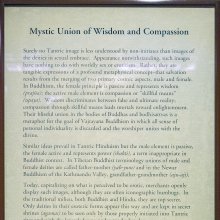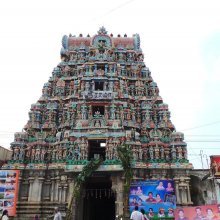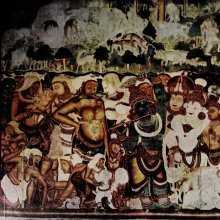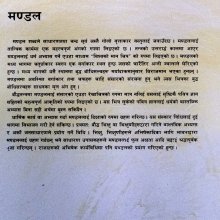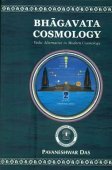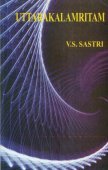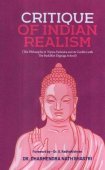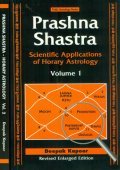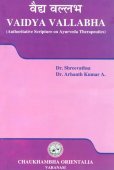Understanding, Understand: 2 definitions
Introduction:
Understanding means something in Hinduism, Sanskrit. If you want to know the exact meaning, history, etymology or English translation of this term then check out the descriptions on this page. Add your comment or reference to a book if you want to contribute to this summary article.
Images (photo gallery)
(+4 more images available)
In Hinduism
Purana and Itihasa (epic history)
Source: Shodhganga: Elements of Art and Architecture in the Trtiyakhanda of the VisnudharmottarapuranaUnderstanding and Writing (of code words and words in particular way), as part of the “sixty four kinds of Art”, according to the Kamasutra of Vatsyayana.—Cf the Sanskrit Akṣaramuṣṭikākathana.—Indian tradition, basically includes sixty four Art forms are acknowledged. The history of Indian Art covers approximately five thousand years which presents a rich and almost continuous record. The references of sixty four kinds of Kala (कला, kalā) are found in the Bhagavatapurana, Shaiva-Tantras, Kamasutra of Vatsyayana etc.

The Purana (पुराण, purāṇas) refers to Sanskrit literature preserving ancient India’s vast cultural history, including historical legends, religious ceremonies, various arts and sciences. The eighteen mahapuranas total over 400,000 shlokas (metrical couplets) and date to at least several centuries BCE.
Shaivism (Shaiva philosophy)
Source: ORA: Amanaska (king of all yogas): (Shaivism)(One’s faculty of) Understanding is denoted by the Sanskrit term Hṛdaya.—In his commentary to the Svacchandatantra (11.197), Kṣemarāja provides the following definition: “Kuhaka is that which causes astonishment and convinces those of limited understanding (mita-hṛdaya). It is chiefly magic”. In his commentary on the Netratantra (18.89), Kṣemarāja glosses kuhakāni as: “Deceitful (things) such as amulets of control, witches, etc.”. These glosses affirm that kuhaka can be understood more specifically to mean an astonishing, magical feat rather than its general sense of something that causes astonishment, the latter definition being that of Dhātupāṭha 10.443.

Shaiva (शैव, śaiva) or Shaivism (śaivism) represents a tradition of Hinduism worshiping Shiva as the supreme being. Closely related to Shaktism, Shaiva literature includes a range of scriptures, including Tantras, while the root of this tradition may be traced back to the ancient Vedas.
See also (Relevant definitions)
Partial matches: Understanding, Te.
Query error!
Full-text (+4431): Jnatavya, Jnana, Jnapti, Avagata, Mati, Buddhi, Dhi, Ingitajna, Samvitti, Jnata, Arthavijnana, Vidita, Avabodha, Prajna, Jneya, Sudhi, Medha, Bodha, Durjneya, Sambuddha.
Relevant text
Search found 646 books and stories containing Understanding, The understanding, Understand, Understood; (plurals include: Understandings, The understandings, Understands, Understoods). You can also click to the full overview containing English textual excerpts. Below are direct links for the most relevant articles:
The body in early Hatha Yoga (by Ruth Westoby)
Praxis floats free < [Introduction: Female:body]
Is rajas procreative? < [Chapter 3 - Tracing blood]
Bodies both subtle and yogic < [Introduction: Female:body]
Vaisheshika-sutra with Commentary (by Nandalal Sinha)
Sūtra 3.1.18 (Mark of Inference of Soul) < [Chapter 1 - Of the Marks of Inference]
Sūtra 8.1.1 (Cognition explained by allusion to III.i.2, 18) < [Chapter 1 - Of Presentative Cognition]
Sūtra 1.1.6 (Enumeration of Attributes) < [Chapter 1 - Of Substance, Attribute, and Action]
Mahabharata (English) (by Kisari Mohan Ganguli)
Section CLXIV < [Anusasanika Parva]
Section CCXLVI < [Mokshadharma Parva]
Section CCXVII < [Mokshadharma Parva]
Chandogya Upanishad (Shankara Bhashya) (by Ganganatha Jha)
Section 7.17 (seventeenth khaṇḍa) (one text) < [Chapter 7 - Seventh Adhyāya]
Section 7.7 (seventh khaṇḍa) (four texts) < [Chapter 8 - Eighth Adhyāya]
Section 7.26 (twenty-sixth khaṇḍa) (two texts) < [Chapter 7 - Seventh Adhyāya]
Journal of Ayurveda and Integrative Medicine
MOLECULAR AND AYURVEDIC BIOLOGY OF INFLAMMATION 2014 < [Volume 5 (issue 2), Apr-Jun 2014]
Dying as a focus for an integrative health and social care approach. < [Volume 14 (issue 1), Jan-Feb 2023]
Integrative biology for integrative medicine: A complete approach < [Volume 14 (issue 6), Nov-Dec 2023]
Related products
(+37 more products available)
